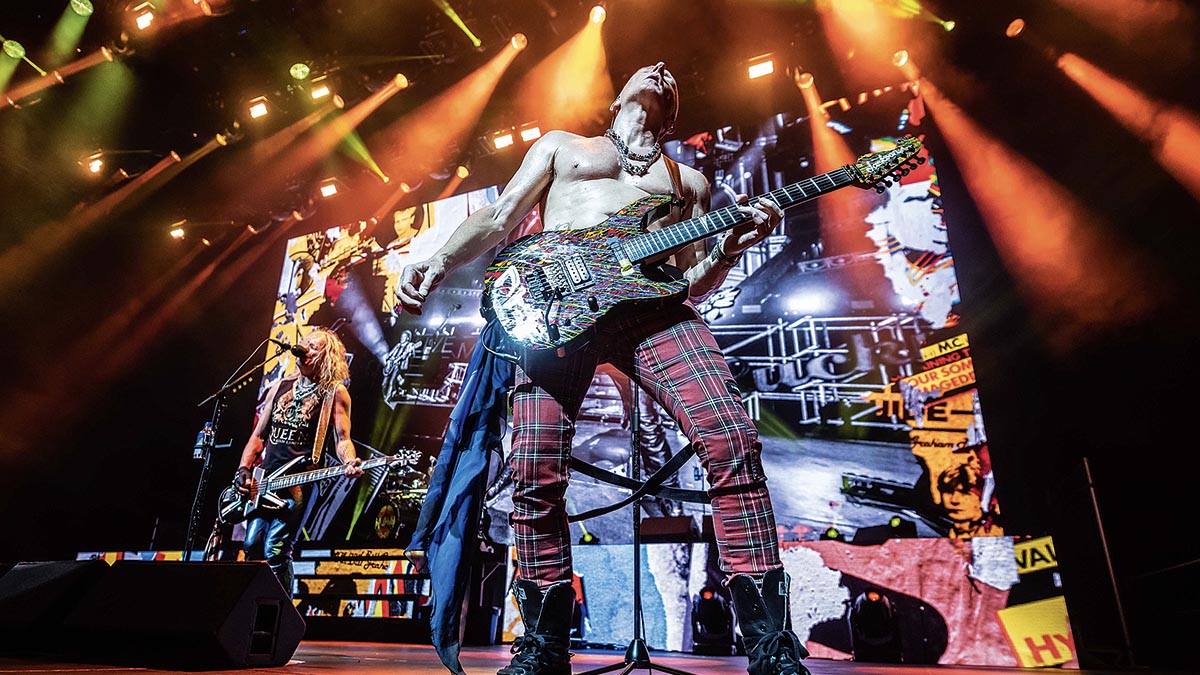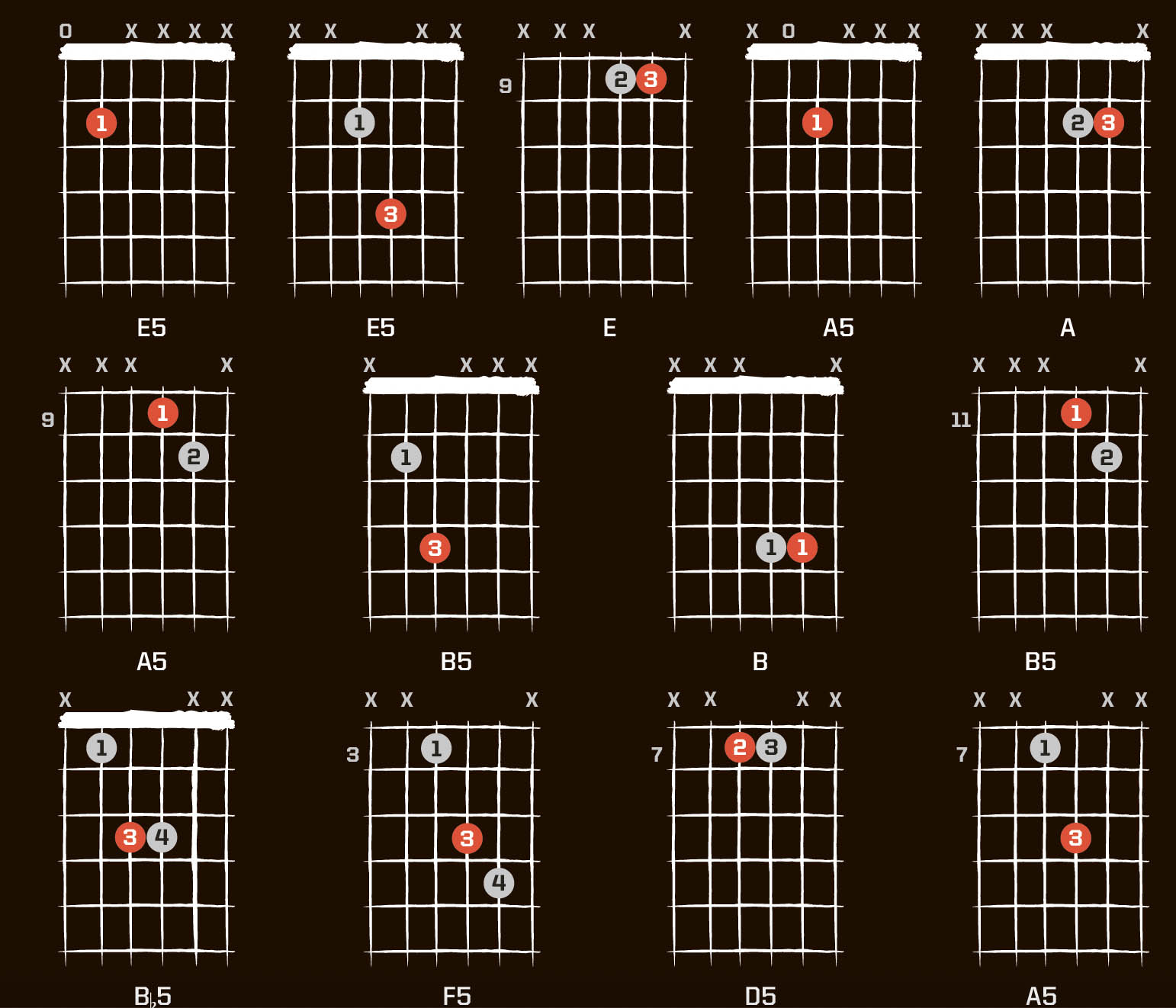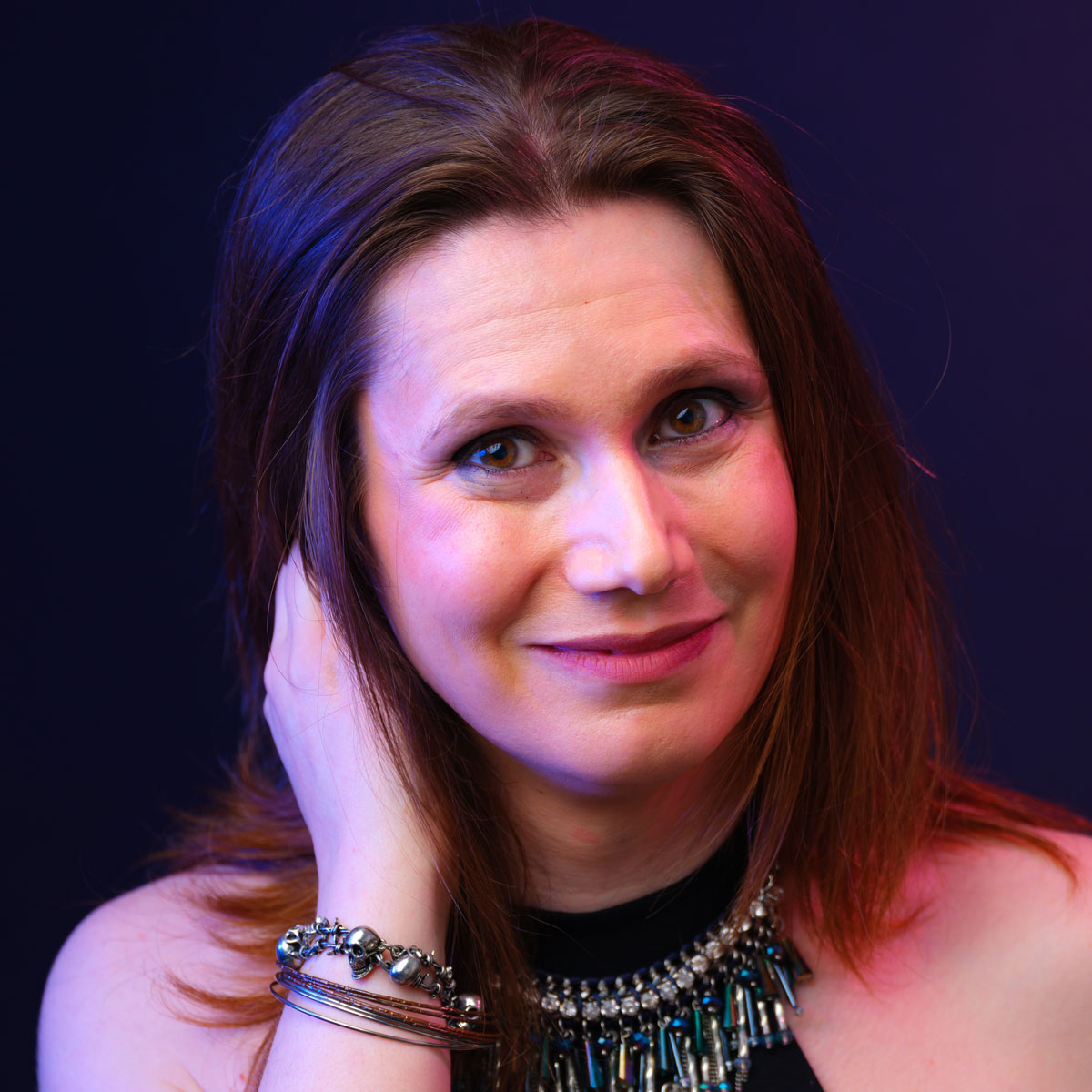Def Leppard share 8 tips on how to create a killer rock anthem
Leppard guitarists Phil Collen and Vivian Campbell on the art of the stadium rock banger. Rule number one: “Respect the melody...”

Only four British bands have had two 10-million selling albums in America. The first three – The Beatles, Led Zeppelin and Pink Floyd. And the fourth? No, not The Rolling Stones. Not The Who. Not Queen. It’s Def Leppard.
Formed in Sheffield in 1977, the band rose to fame in the ‘80s with the two blockbuster albums that sealed their place in that exclusive club – 1983’s Pyromania and 1987’s Hysteria.
And the key to this success is their mastery of the rock anthem – as illustrated in hit songs such as Pour Some Sugar On Me, Animal, Photograph, Rocket, Rock Of Ages and Let’s Get Rocked.
This summer, they head out at last for the twice-postponed Stadium Tour in the US with Mötley Crüe, Poison and Joan Jett. But while Leppard could easily tour for the rest of their lives off their back catalogue, the urge to make new music is still strong within them. “A lot of artists stop growing and creating,” says guitarist Phil Collen. “We haven’t.”
The making of new album Diamond Star Halos was a first for the band – as they worked remotely from their homes, recording song ideas and individual parts on laptops, sharing material via Dropbox, which was then collated into finished tracks by the band’s long-serving producer Ronan McHugh. But the band’s signature sound remains very much intact on an album packed with new anthems in the classic Leppard tradition.
The first single, Kick, nods to their glam rock heroes from the early ’70s. Even the album’s title is taken from the lyrics to the T.Rex glam classic Get It On. And throughout the album, Phil Collen’s partnership with Irish guitarist Vivian Campbell, is as strong as it’s ever been – something that’s evident from the get-go with the blazing trade-off solos in the opening track Take What You Want.
These guys have been playing together for 30 years now. Phil joined the band in 1982 during the making of Pyromania. Vivian joined 10 years later following the death of the band’s original member Steve Clark.
Get The Pick Newsletter
All the latest guitar news, interviews, lessons, reviews, deals and more, direct to your inbox!
Creating stadium rock bangers is Def Leppard’s speciality, and here, Phil and Viv present their guide to how it’s done...
1. The song is king
Vivian: “The real reason why Def Leppard is so different to so many other bands is we know – it’s not about us, it’s about the songs. It’s not about how well I can play guitar or how well Phil can play guitar. It’s about the fucking song. You do your guitar parts as best as you can but at the end of the day the song is going to outlive all of us.”
Phil: “You’ve got to listen to what the vocal’s doing. You have to respect that main melody, and then you can alter stuff around it. It has to be within the vocal structure, because you can fuck something up.”
2. Know when to let rip
Phil: “The reason we’ve played safe in the past is because you’re respecting the song maybe too much. With this one, because we recorded remotely and there was no-one else in the room it’s like, ‘Fuck it.’ You can overthink and play too safe. You’re like, ‘I don’t want to tread on anything.’
“With this one, I was like ‘Well, I’m going to experiment. I feel this should be like this,’ and go off. I’d send it to everyone then if no-one says, ‘That’s a bit over the top!’ then you’re fine.”
Do I have any more signature gear planned? God no. I want less gear, not more. How you play guitar begins and ends with your hands
Vivian Campbell
Vivian: “I do feel that my playing is better than ever and certainly more comfortable. I have a lot less anxiety about it, probably because I’m doing it so much since I started Last In Line (the group he formed in 2012 with fellow ex-members of Dio – the band in which he made his name in the early ‘80s).
“The passion was reignited and I’ve definitely built upon it. When it came time to do guitar solos I didn’t have the pressure of other people in the room. You know, ‘Lunch is coming up. When is he going to do this?’”
3. Leave a gap for the snare
In the past, Leppard learned so much from Mutt Lange, the producer of Pyromania and Hysteria, they even called him the ‘sixth member’ of the band.
Many of Lange’s hits have riffs that pause for the snare drum – check out AC/DC’s Highway To Hell and Back In Black or The Cars’ You Might Think. The same is true for Leppard’s new single.
Phil: “With Kick, I think I had the chorus and then it broke down to the verse. I wanted something with gaps, like Pour Some Sugar On Me. When we did that my original riff was a bit like White Lines by Grandmaster Flash, a continuous thing. Mutt was like, ‘Oh no, man, you got to leave a gap for the snare!’ That just brought it to life. I wanted to do that for the verse of Kick.”
4. Playing matters more than gear
Vivian: “I moved from Los Angeles to New Hampshire, so I don’t have many guitars at home. Most of my guitars are in Def Leppard’s locker in southern California. It’s probably just as well because there’s enough choice in the drop-down menu in Guitar Rig without auditioning every Les Paul again.
“I don’t want to get into the weeds too much. It’s about the performance more than the guitar, the preset or anything. To be honest, a lot of my choice came down to which guitar has the freshest strings!”
Phil: “On this album, I used a Squier Tele Thinline on the solo of This Guitar. It was just a standard thing I bought years ago in Dublin and it’s just great. It’s a Squier Starcaster at the beginning. And for the solo on Gimme A Kiss, I actually used a Squier Super-Sonic with a wah.
Vivian: “Do I have any more signature gear planned? God no. I want less gear, not more. How you play guitar begins and ends with your hands. The rest is just shit to get in the way and shit that’s gonna go wrong.”
Phil: “Everything is recorded with Guitar Rig. I’ve been using the same main preset since 2011. I made some presets for Guitar Rig 6 but I didn’t want to update my computer because I was scared it wouldn’t work anymore.
“Sometimes I’d send Ronan [McHugh, producer] the unamped sound so he can reamp it, but with a lot of this stuff the main demo sound is what’s on the record. Live we use Fractals, and whenever I do solo gigs I use a Blackstar Silverline. There’s subtle differences obviously, but it all sounds like me – it sounds exactly the same!”
Vivian: “Because your tone is in your hands it doesn’t really matter. Phil can pick up my Les Paul, and it sounds like Phil through my gear. I’ve played solos before with his Jackson, like the solo in the song Paper Sun [from 1999’s Euphoria]. You can hear because I forgot to turn the sustainer off and you can hear there’s one point where it goes into feedback. So tone is 100 per cent in your hands.”
5. Perfection sucks!
Phil: “The intro to Kick was from my demo. You can hear this ringing that sounds like someone hit a jar or something. It’s the guitar just overloading and peaking. We left it on because it sounds cool. The solo was a total guide, mistakes all over the place. I’m like, ‘Fuck it, sounds great!’ I love it just the way it is, so we left it on.
“Normally we do 30 tracks of a vocal harmony. On this one, some of the stuff is just me doing eight tracks. I would do a guide vocal in my echoey front room. Grab a [Shure] SM58 and just sing, like, ‘I’ll do it properly later on but this is how it goes.’ Ronan would go ‘That’s great! Just use that,’ and someone else would harmonise. You can actually hear everyone’s voice.
“Joe [Elliott, vocalist] was fucking spectacular. He was doing stuff in Dublin on his laptop with a little shitty mic that he does his radio show on, and that’s some of the stuff that ended up on the album. That’s Mutt Lange’s thing. You’d say, ‘It has to be perfect.’ He’s like ‘F*ck no, I hate perfect!’ He said it just has to sound and feel right.”
6. Work with people who are better than you
Phil: “It really helps me as a songwriter to write with someone who’s better than me, or different to me. The speed that they do things is a little intimidating sometimes but it’s just great to be around. I was writing with Sam Hollander, who wrote High Hopes for Panic! At The Disco. He’s just awesome. It was really inspiring working with him because he’s so quick firing.
When I did the G3 tour with Satriani and Petrucci. We were doing Highway Star and from the first rehearsal I was like ‘F**k, I’m gonna have to practice a lot’
Phil Collen
“You know he’s just writing away and just bouncing whole ideas. We had the whole thing done in an afternoon. You want to be around someone who’s gonna do that. When I did the G3 tour with Satriani and Petrucci. We were doing Highway Star and from the first rehearsal I was like ‘Fuck, I’m gonna have to practice a lot more because I’m just gonna get left behind by these guys.’
“They’re just it’s so far over the top. John goes, ‘Well, if I do this harmony, Phil, you can do this.’ It was further than I’d ever stretched on anything I’d ever done. I love someone giving you a helping hand and pushing you at the same time.”

7. Create hooks everywhere
Phil: “I always go back to Killer Queen [a number 2 UK hit for Queen in 1974]. There’s a hook almost like every two bars or something!
Vivian: “In Def Leppard world, we wouldn’t be very excited about just power chords. Normally we’d be looking for a jangle to go on top. The jangle is what starts to elevate it to something other than the ordinary. That’s not just a chord thing. We’re looking for a part to go on top of that.
Phil: “You can even do lead parts around the vocal, but you have to have that bedrock there. On the title track from Hysteria we had the vocal melody beforehand and Steve [Clark] would come up with something different. Again, it’s got to respect the melody. As Keith Richards so eloquently put it, weaving sonic tapestries.”

Total Guitar says: ‘The jangle’ can be distorted arpeggios (Let’s Get Rocked), clean arpeggios (Photograph), or jamming on a ringing open string (Pour Some Sugar On Me). Check out Love Bites, Hysteria and Animal for lead guitar hooks that fit around the vocal.
Our tab example shows how Leppard write lead parts around chord progressions. One note changes on each repeat to fit the chord changes, but that note isn’t necessarily a root note. Over the E chord, the lick starts on G# (the major 3rd) and moves smoothly up one fret to A when the chord changes to A major.
8. Layer your chords…
Vivian: “In a really good Def Leppard song, Phil and I are never playing the same parts. In the hard rock world, there’s this school of thought that you have two guitar parts playing the same thing to make it sound heavier. If I get a demo from Phil, I would never play the chords in the same register he’s put them down already. I just try inversions.
“There’s countless ways you can play a chord up the guitar neck. But the bridge section in Hysteria where the notes were recorded one at a time for the chord – we’ve never done anything like that since. I think that’s too much work!”
Phil: “If you want to make it broader, if someone’s playing a powerchord or a barre chord, and the other one’s doing an open version, that sounds great. If you’re playing a D you could add an A chord, you know the first and the fifth. You put the parts in different octaves and also you do a different rhythm.”

Total Guitar says: In Pour Some Sugar On Me, the chorus has the chords E, A, and B split across multiple guitar tracks. It is possible to play all those notes on one guitar, but with distortion they can sound muddy and out of tune.
Harmonised chords sound clearer, just as a Thin Lizzy-style twin guitar solo sounds clearer than playing doublestops on one distorted guitar. You can get more ambitious by layering these E and A shapes over each other.
Animal begins with an F5 powerchord layered over a Bb5 to create a big Bbsus2. The riff in Photograph includes a partial D5 chord layered with an A5, which makes Asus4. To hear parts in different octaves and with counter rhythms as Phil describes, listen to the chorus of Hysteria with headphones on.
Jenna writes for Total Guitar and Guitar World, and is the former classic rock columnist for Guitar Techniques. She studied with Guthrie Govan at BIMM, and has taught guitar for 15 years. She's toured in 10 countries and played on a Top 10 album (in Sweden).
“There’d been three-minute solos, which were just ridiculous – and knackering to play live!” Stoner-doom merchants Sergeant Thunderhoof may have toned down the self-indulgence, but their 10-minute epics still get medieval on your eardrums
“There’s a slight latency in there. You can’t be super-accurate”: Yngwie Malmsteen names the guitar picks that don’t work for shred


![A black-and-white action shot of Sergeant Thunderhoof perform live: [from left] Mark Sayer, Dan Flitcroft, Jim Camp and Josh Gallop](https://cdn.mos.cms.futurecdn.net/am3UhJbsxAE239XRRZ8zC8.jpg)







